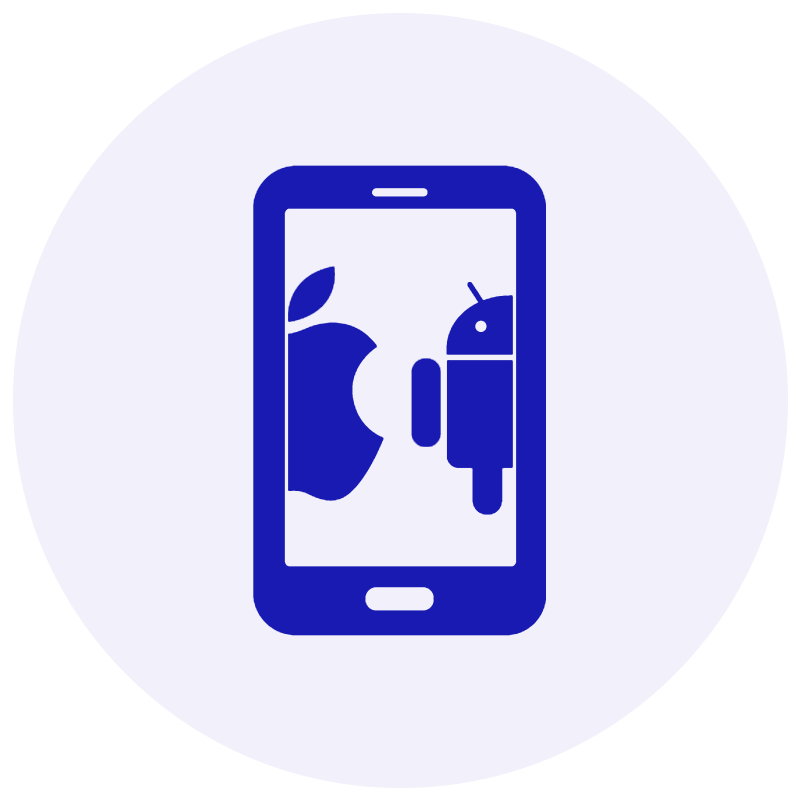
by admin | Jan 12, 2021 | Web Service Testing, Blog |
For the most part, apps deliver a smooth user experience once developers release them to the public. However, a bug can bring the entire application down. When this happens, it is almost always because of the lack of application testing. Here are the six basic steps of the testing phase that software testing companies will use to assess a product.
Functionality Testing
The first thing to do is to ensure that the web application functions properly. Functionality testing studies the web page links, the database connection, cookies, and submission forms, among others. Developers must perform these tasks early in the app-building process. You can perform these automatically with software or manually through human testers. Multiple tests with different data should produce roughly the same accuracy before developers consider the app functionally correct.
Usability Testing
After functionality testing, developers perform usability testing. This kind combines the results of the functionality test and user experience. It involves developing a testing strategy that examines all app functions, including navigation and content, and recruiting test participants, both internal and external.
Interface Testing
After functionality and usability tests, interface testing comes next. This kind of test looks at the smoothness of interactions between the app servers and the web servers. Interface testing also looks at whether error messages display correctly and if the server properly handles interruptions (whether server- or user-side).
Compatibility Testing
Developers must also check browser compatibility and how the app displays information in different mobile browsers. The developers need to run the browser compatibility test to check if the app is displayed correctly in different browsers. Different operating systems show elements differently, so compatibility tests are vital in ensuring that the content stays the same when delivered to different users.
Performance Testing
After testing for compatibility, a developer must check performance under pressure. Testing under different internet speeds and loads is necessary. If possible, testing the overall web performance can also provide more information; a website speed automated test can help.
Performance testing helps software testing companies and developers identify the app’s “breaking point” and putting pressure on it in increasing amounts will identify the point at which the app will stop functioning. You need to know this ahead of consumers. Also, you should know how your app bounces back from a crash. If recovery isn’t smooth, you need to work on it.
Security Testing
Finally, a web application undergoes security testing, determining an app’s weak points through a series of fabricated attacks. To identify the app’s security needs, the developers or the testing team must gather all the pertinent information, including the developers’ operating system, hardware, technology, and the like.
A tester would then identify and list potential vulnerabilities and threats, prepare a threat profile, and a test plan. Then, the developer will conduct both manual and automated security tests. Afterward, they will prepare security test case documents and fix any defects identified.
Conclusion
Testing is a vital part of website application development. However, some developers can underestimate it. This tendency is a problem because the older an application, the likelier it is for bugs to appear, and the costlier the repairs become. With proper website testing, developers can avoid bugs and ensure a successful rollout of the web application.
If you think you need web application testing, get in touch with Codoid today. We provide several types of software testing services, from web service testing to mobile app, game testing, and more. Get in touch with us for inquiries!

by admin | Sep 21, 2020 | Web Service Testing, Fixed, Blog |
As everyone is aware, manual testing is a cycle of finding bugs in a web application which is finished by a group of testers who always have an eye for advancement. One of the significant functions of a manual tester is to execute a set of experiments to make sense of the number of bugs inside a web system and the causes for them to arise. After that, developers concoct efficient solutions to make the product exceedingly viable. Manually testing a web application has been a conventional method of discovering bugs and mistakes in an application.
Web application testing checklist for manual testing:
General Validation – This approval technique considers the general engineering of a given web application. Scarcely any convergence can be recorded as follows:
- Confirm whether the navigation toolbar is working with the assistance of the ‘Tab’ button.
- When you land on a webpage, the cursor must flicker on the login field, which indicates the client that their site is functional.
- The fields or menu features that are disabled must not be interactive or in a functional condition.
- The textual styles utilized by a developer in a site must be uniform overall programs.
- Scrollbars, either vertical or horizontal, must not be apparent except when necessarily required.
- There should be an appropriate alignment of controls in the window.
- For example, each control, status bar, field prompt, error texts, or pop up messages must cling to correct spelling.
- The cursor should be set in the content field at all times on a website page.
- The controls should likewise follow naming displays.
- Verify from various security viewpoints like what occurs in the event that a client revives or taps on the back button while payment procedure is in process.
- The size of buttons, menus, and text fields must be of a proper estimation and should line up with different control features according to the page’s length and width.
- Check if there is any wrecked connection inside the application.
- Does a text field follow run limitations, that is, if a password field is customized not to acknowledge characters more than 10, at that point it must show a proper message under error information.
- When another client gains access, an ‘enrollment successful’ affirmation message should prompt on his screen.
- Session time out action is a significant check if any client exceeds the designated time span.
- Check for Website design enhancement by confirming Meta phrases – title, catchphrase, portrayal.
Field Level Checks
Strives to test the fields like dropdown, checkboxes, text-boxes, list boxes, and so on.
- A dropdown list should entail things in a sequential request.
- A button’s name must be sufficiently distinct from prompting the user the function it performs.
- Suppose there should arise an occurrence of a text box. In that case, it is imperative to stamp the compulsory fields for record-keeping so that a company can utilize the client’s credentials most fittingly, and they don’t pass up on the most basic details of the client.
- Suppose there should be an occurrence of a text field that prompts a client to enter a telephone number or postal code or some other numeric information. In that case, companies undertake approval checks to guarantee that a client enters just numbers and no other character. An error message should pop up in the event a user enters something different.
- An email field must perform a legitimacy check by provoking the client in the event that he is entering the right email id or not.
- The Password field must show messages concerning adherence to the characterized arrangement of passwords, including its length, kind of permitted characters, etc.
Database Checks
An information base structures the foundation of a web application, as the solicitations are prepared by bringing the outcomes from the backend, i.e., the information base. Not many information base approval checks incorporate –
- A section must not prompt invalidity except if a limitation states so.
- Regardless of whether the information is spared in the correct order, the information base should navigate the credentials to the accurate origin.
- Check for password encryption.
- Check what amount it takes for a put-away methodology to execute an order.
Security Checks
Callousness in verifying security provisions can endanger a programming application. You have to recognize the key zones that are inclined to a potential security breach along these lines.
- Ensure that all information is sent over the web utilizing ‘https,’ for example, payment data, passwords, and consumer credentials.
- Sensitive information should never show up in the URL.
- When a client meeting is finished, the same individual must be provoked again to log in.
- Check for Denial of Service (DoS) assaults.
Other things to consider while testing a web application manually:
- The average burden on the server (e.g., number of hits per unit time)
- The sort of execution required under each load condition (for example, web server reaction time, database question reaction times.)
- The kind of tools required for execution testing (for example, web load testing tools, different in-house devices that can be adjusted, web robot downloading devices, and so forth.)
- Who is the intended interest group? What sort of programs will they use? What kind of association rates will they discover? Is it accurate to say that it can bear intra-associations (high association speeds and comparable programs)?
- What sort of execution is typical from the customer’s side (e.g., how quickly should the pages load or how instantly should the media run)?
- Gauge the permitted downtime for server and content upkeep/overhauls. Assuming this is the case, ascertain the amount.
- The type of security (firewalls, encryption, and passwords) required and the features that it will entail.
- Consider how solid the webpage’s web associations need to be. Also, understand how that influences the reinforcement framework or repetitive association prerequisites and testing.
- The cycle needed to oversee updates to the site’s content
- The prerequisites for looking after, following, and controlling page content, illustrations, media, and images
To Wrap:
Manual testing expects one to have an innate nature of curiosity that will draw out the best of a tester’s abilities. This checklist will help you to undertake the perfect manual testing.

by admin | Mar 19, 2020 | Web Service Testing, Fixed, Blog |
Since there is an increase in number of Technologies, Operating systems, web services, interfaces with Web Apps with various touchpoints and Browsers, Web Application Testing has become more tedious and more complex. With continuous and seamless delivery, web App testing is much more critical to the success of delivery to ensure the quality.
Below are the challenges in testing Web Application:
Defining Scope:
First and foremost challenge in Web App Testing is defining the scope. Since there are multiple teams working simultaneously on multiple touchpoints, a change in scope/scope of 1 Application will have an impact in the delivery of other App since both are interdependent of each other.
Careful release planning is expected across teams to ensure the right delivery at right time. From a testing perspective, such scope has to be thought through and clearly called out. If there are unknown areas, it has to be called out in dependencies section of Test plan and signed off from Program team.
Scope Creep and Gold Plating:
Often in the projects particularly in Web App testing during delivery scope creep / Gold Plating are natural tendencies.
Scope creep occurs when there is a change in the scope defined by business stating “Must have” for the current release. Such requirements were not thought through by the Business team during the planning phase and hence it would not have been accommodated earlier. Now this feature will be developed and tested with the same timeline
Gold Plating is an additional feature added as a part of release considering to please Client / Business to create a “Wow factor” without adding any cost to it
For both of these, there are additional scopes to be tested and it is to be delivered within the stipulated timeline and handling such items in testing will be a challenging one.
Technology Challenges:
This is one critical area when it comes to testing. Due to changing technologies every day, where additional features are also added by product companies, testers need to know the features of the product + Technologies so as to test it thoroughly.
Testers need to know the technology and how it behaves on the certain condition so that they can define scenarios according to the Technology and coverage will be good
Schedule slippage:
Whenever there is a scheduled slippage by the development team, it adversely impacts the testing timeline as there is no compromise from a business on the delayed deliverable and hence it has to be buy-in by testing timeline.
There is also a schedule slippage due to defects and timeline taken by the development team to fix it. Ultimately Testing team has to complete the work on time and to be delivered on time to Business.
Security:
For the growing Internet, security is the major constraint. For banking and Insurance Applications, most of the payments are initiated through Web and there is a need to validate all the security App to ensure right transactions are sanctioned and a malicious attempt should be recognized and stopped.
For Retail domain, transactions/purchase happens online and during offer period lakhs of transactions/attempt to purchase happens. Web App should support the right transaction and orders should be authorized properly.
For Healthcare Industries, most of the Transactions are done online from procuring medical equipment till Doctor Consultations happen online through Web Interface and it is recommended to govern all these transactions to provide the right service.
For Automobile Industries as well, most of the Orders are procured through a Web interface and there is a critical testing requirement to test all these without missing features.
Performance
Since millions of transactions irrespective of the type of industries happen through Web Applications, performance testing of Web App is crucial. There are various types of Performance Testing can be performed like Load Testing, Stress Testing, Volume Testing, Soak Testing, etc.
Identifying the right performance testing based on the nature and type of application is a challenge.
Application Response
Based on the type of device and the network bandwidth application response to the user varies. It could be an annoying experience to Users if such responses are not captured and notified by the testing team before delivery so that Response improvement can be carried out and delivered with the better response time.
During Test Planning phase, we have to plan for such testing as this response analysis could be time-consuming and it comes under non-functional testing and should engage the right resource for this analysis
Usability Testing
Sometimes as a Web page and navigation it might look correct from development and testing team, whereas from the End User perspective, Website might look complicated than expected and users might find it tough to navigate to the right page and collect/process the information. In such a case, this Website might be unusable from an End-user perspective. The challenge from the testing team would be to understand the Application from an End User perspective and provide the right feedback to the development team which could lead to higher failure rate in delivery if it is missed out.
Compatibility Testing
Before commencing the testing, the detailed thought process has to go in to find out what all devices / OS / Browsers this Web App will be supported. Such information should be captured from the development / Architects / Program team and detailed planning has to be done by the testing team.
Since testing carried out in each device / OS/browser is an additional effort and hence during execution, it would increase the effort if not planned properly. Usage of Automated tools like selenium / UFT / Python to be planned if many devices / OS/browsers testing are required.
API Testing:
Since for most of the Web Apps, there is an underlying API layer which helps in getting the request from Web App and provides a back response back to Application, including API Testing apart from UI validation is mandatory.
API Testing itself is huge and technology has gone beyond Web service to microservices. The testing team has to understand API / Microservice concepts and perform API testing and it is a challenge.
Database Testing:
Database also has gone beyond from relational database to Big Data and it is again an extension to Web Testing. Testers need to be strong in SQL, PL / SQL and it is considered as a specialized stream in Testing.
Reports Validation:
Reports are the basic querying feature provided by many Web Apps. This helps users to know about their application status as well as monthly/quarterly and Yearly summary of their Account details.
User can know the list of transactions made / items purchased / items rejected / invoice dates / Payment dates etc through a single click through Reporting feature.
For every type of report, set of queries will be used and Tester should have knowledge on SQL to retrieve the information from Database and the output generated through reports has to be compared and validated.
Products Testing:
There are a lot of products developed using Web Application. Some of the standard applications are SAP, Peoplesoft, Business Process tools like PEGA, IBM BPM, etc.
Apart from this, for each of the industry type like BFSI, retail, Hospitality there are numerous products are available like Kronos, Investran, WMOS, OMS, Calypso, Murex, T 24, etc which require extensive learning and mostly BA / QA kind of role is picking up to test such products which are customized to various customer need. And always there is a scarcity of QA professional to test such products.
Conclusion:
With the invention of various technologies and products to meet Client requirements, there is always a lot of challenges from a QA perspective to test such applications. It involves careful planning right from the project release perspective until identifying the right skilled QA professionals for the project. Understanding the requirements, interface touchpoints and arriving right scoping is a mandate for successful QA delivery.
Happy Testing!

by admin | Feb 16, 2020 | Web Service Testing, Fixed, Blog |
Testing your website on different devices is the need of the hour. Nowadays visitors access your website through desktop and mobile browsers (Chrome, IE, Edge, Firefox, and Safari). Hence your website should be optimized for mobile devices as well. Mobile Voice search is gaining popularity off late.
Let’s say an user searches your services or products using Mobile Voice Search and your website is not mobile responsive, then it will negatively impact your business. Test your website/web application on different devices and browsers before launching. Whenever we get a inquiry for website or web app testing, the default questions what we receive is “How to test a website? Web development companies design and develop mobile web sites/applications. However, conducting functional and non-functional testing for a newly developed web app on various devices requires a holistic testing process and strategy.
In this blog article, you will learn how to test your website on different devices.
Platform Coverage
Ensuring good user experience on all platforms is a must. Ask your tester to use real mobile devices to check mobile responsive designs in multiple OS and devices combinations. If you are targeting users in a specific geography, then use any Cloud Testing Platform which provides Geo Location testing facility.
Test in Real World Conditions
Let’s say you have performed all the testing activities in your office where you have strong WiFi connectivity and Internet Connectivity instead of testing in real user conditions, then you are not guaranteeing the users that the web app will function in different environments. Test your website/web app in low network connectivity, after enabling Anti-virus software browser plugin & Ad-blocker settings, and opening other apps running the background.
Navigation Testing
Test all user paths on smart phones, tablets, and desktop browsers. Testing Menu navigation and the screen resolutions is vital to ensure a smooth user journey on your website.
Performance Testing
Testing a web server load to check performance bottlenecks is important. However,
how quickly images, CSS, JavaScripts are downloaded when a browser loads a web page helps you to measure client side performance. If an user experiences a page loading issue, then he/she may jump to your competitor’s site. Test client-side performance on different platforms and under specific network conditions.
Accessibility Testing
Perform Accessibility Testing to ensure all the users, especially those with disabilities are able to interact, navigate, understand, and perceive with your website. Web Accessibility helps by making sure that people don not face any roadblocks when accessing a website, regardless of their disability.
Visual Regression Testing
Nowadays, we, as a test automation services company, recommend our clients to setup automated visual testing along with Selenium and Appium automated test suites. The reason is your Selenium test scripts find elements in HTML DOM and perform actions on them. However, it never validates whether the elements are displaying as per the responsive design or not. For example: if an element displays without CSS styles, then your Selenium script still performs action on the element and mark the step as ‘Pass’. Use Selenium scripts for functional testing and the tools like Applitools and Huxley for Visual Testing.
In Conclusion Your website should accommodate the elements dynamically when an user accesses from different devices and browsers. Run automated validations on all device combinations when new changes are amended in your website. Contact Us for your QA needs.

by admin | Jan 7, 2020 | Web Service Testing, Fixed, Blog |
We often get the following question – Which is a better web application automation testing tool Selenium/Protractor? whenever we demonstrate our automation testing capabilities to the clients. Tool selection should be based on the following key attributes, team’s skill-set, Documentation, Training, Online Communities, Programming Languages Support, Reporting, and Software Under Test (SUT) Technologies. In case of open-source test automation tools, you don’t get all the required features in a single package. However, if you go with a commercial tool, most of the required features come in handy in one software suite. In this blog article, we are listing all the web application tools which will help you during test automation tool selection process.
Selenium is an ideal choice for most of the companies for web application automation testing. Once Selenium is chosen, the next question is which programming language can be picked up for scripting. You can write Selenium automated scripts using Python, Java, Ruby, C#, and JavaScript. Choosing a programming language for Selenium scripting is a daunting task for many. However, we strongly recommend you to go with the same language in which your application or product is being developed. The reason is – most of the coding practices which are followed by your development team are applicable for automation testing as well and it enables whole team approach. Before selecting the programming language check whether your testers are comfortable with that programming language. Consider, if your development team is using JavaScript extensively and you are choosing it as scripting language, then your testers may not be interested with JavaScript. So check your testers’ comfort level before choosing a programming language for automation scripting.
Don’t get confused with Tool and Framework. Protractor is an end-to-end test framework for Angular and AngularJS applications. Advantages of Protractor:
- It is built on top of WebDriverJS. So Protractor adds Selenium’s new features whenever it is released.
- Selenium has ID, XPath, CSS, ClassName, LinkText and Name locators. If your SUT is an AngularJS application, then you can use additional locators like repeater, model and binding.
- Writing synchronization steps avoids false positives in automation testing. However, in Protractor, you no need to write sync steps. It waits for page load automatically.
- Protractor also supports BDD Frameworks like Cucumber, Jasmine, and Mocha.
If your development is using JavaScript extensively and SUT is an Angular Application, then Protractor is a good choice for web application automation. Note: you can also achieve all above list advantages in Selenium, if you have an expert automation testing team.
Cypress is an all in one test automation framework. It comes in four plans a free plan (Seed) and three commercial plans (Sprout, Tree, and Forest). What is unique about Cypress? For example: If you want to setup an automation testing framework using JavaScript, you may need Jasmine, WebDriverJS, ChaiJS, and other libraries. However, Cypress is not using Selenium and you need to install only Cypress in order to start writing test scripts. Since Cypress is a paid framework, it has some notable features like Parallelization, Grouping tests, and comprehensive test results. If you have a team which has limited knowledge in automation testing, then Cypress is a go-to automation testing framework.
Sahi Pro comes in three plans for Web, Desktop, and Mobile. You can run your automated tests on any browser. Sahi Pro waits automatically for AJAX and Page Loads. It has in-built object spy and recording options. Sahi has its own script language. You can also integrate your test scripts with continuous integration tools. It is an old and mature automation testing tool. While evaluating Cypress, you can try for Sahi Pro.
Katalon Studio is a test automation framework for Web Testing, API Testing, Mobile Testing and Desktop App Testing and it is built on top of Selenium and provides comprehensive test reporting. Katalon has in-built wrappers which perform Web UI actions. You can also write your own custom keyword using Groovy scripting. It has AI-Powered XPath location mechanism. If you have only manual testers and want to reap quick benefits from automation testing then go for Katalon Studio. Building a strong automation testing team may delay the benefits, however, it ensures the test automation success with any dependencies.
As a test automation services company, we use various automation testing tools. Tool selection is an important step before commencing automation test scripting. We hope this article gives some insights about some popular Web Application Automation Testing Tools. Contact us for your automation testing needs.

by admin | Dec 19, 2019 | Web Service Testing, Fixed, Blog |
Most of us make decisions based on the information we get from the internet because it has become an indispensable part of our lives. Websites that are informative, accessible, and user-friendly have become mandatory for all businesses to stay relevant in the market.
Hence, web application testing is now a necessity to test for potential bugs during the production environment before going live as well as in the maintenance phase. The UI design and functionality are primary of website testing. During this stage, check issues like security, access for disabled users, and the ability to handle the traffic. The following steps are done, depending on your testing requirements.
Checks if your website is as per the functional specifications you laid out in your developmental documentation. Here are a few tests performed under this:
- Check all the links in your webpages are working correctly.
- Test forms used for submitting or getting information from the user on all pages.
- Validate your HTML/CSS to ensure the search engines can crawl your site.
- Test database connection, cookies, and business workflow.
Carried out by testers with a small focus group similar to your target audience and test site navigation and content.
There are three areas to be tested
Application: Check if test requests are sent to the database correctly and if output displayed on the end-user side is the same. Bugs caught should be seen only by the administrator and not the end-user.
Web server: Test if it can handle all requests without any errors.
Database server: Ensure queries directed to database produce forecasted results. Also, check system responses when a connection between the three layers cannot be established and see if the right message displays to the end-user.
Test the response time and see if any bugs show up while executing queries and fine-tune it if needed. Check if test data retrieved is correct and if its integrity is maintained while you create, update, or delete data from the database.
It tests if your website displays precisely the same across different mobiles, devices, and browsers like Firefox, Internet Explorer, Safari, etc. and if the authentication works fine. Web element rendering changes with every operating system such as Windows, Linux, Mac.
Web application response times under different connection speeds and loads (normal and peak). Stress check your web site to note its breakpoint and test how the site recovers. Optimization techniques like zip compression and the server-side cache are enabled to reduce load times.
A website can sometimes store sensitive customer information like credit card details, so check unauthorized access for secure pages. It should also redirect to encrypted SSL pages, and prolonged sessions should automatically get killed, and restricted files should not be downloadable without suitable access.
As a top software testing services company, Codoid knows that it is vital to conduct web testing consistently. That’s why it is best to define all the tasks involved and then create a work chart to estimate and plan the testing steps accurately. Make sure you hire a leading QA company to take care of your web application testing needs and cut costs significantly from your QA testing budget.































